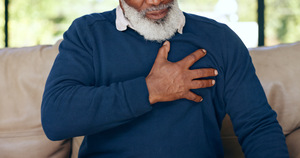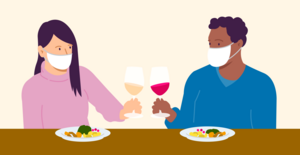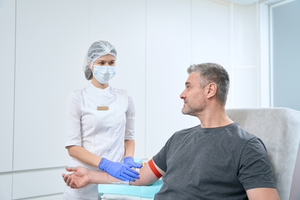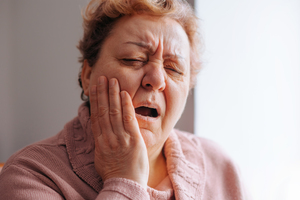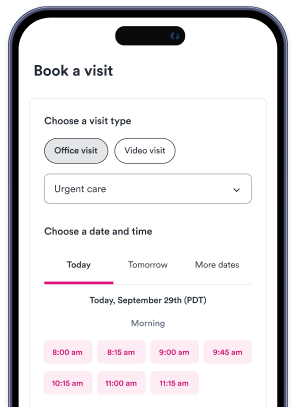Key points
- Bug bites are usually harmless but can sometimes escalate into serious allergic reactions, such as anaphylaxis, requiring urgent medical attention.
- Differentiating between a typical bug bite, a mild allergic reaction, and a severe allergic reaction is crucial, especially if symptoms escalate quickly.
- Most bug bites can be managed at home with over-the-counter treatments; however, symptoms like rapidly spreading swelling, difficulty breathing, or the onset of fever after a bite require urgent medical care.
- Preventative measures such as wearing protective clothing, using insect repellents, and avoiding peak insect activity times can significantly reduce the risk of bug bites and potential allergic reactions.
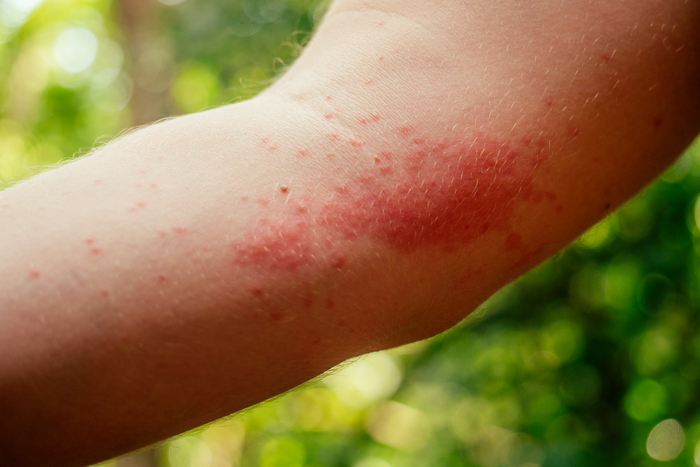
Bug bites are a common part of enjoying warm weather, whether you're hiking, barbecuing, or just spending time in the backyard. Most are harmless and fade on their own, but sometimes a simple red bump can escalate into something more serious. Knowing when to shrug off the itch versus when to seek medical help is key. While mild swelling, redness, or itching are common, symptoms like difficulty breathing, spreading hives, or swelling of the face or lips could signal a potentially life-threatening allergic reaction, such as anaphylaxis. Recognizing these signs early and acting quickly can make all the difference. That’s why it’s essential to understand the line between irritation and emergency, and when an urgent care visit is the safest move.
How to tell if it’s just a bug bite or an allergic reaction
According to the American College of Emergency Physicians (ACEP), most bug bites are annoying but harmless and clear up in a few days with minimal care. But sometimes, your body’s immune system can overreact to the insect’s saliva or venom, triggering an allergic response. Knowing how to differentiate between a typical bite, a mild allergic reaction, and a serious medical emergency like anaphylaxis is critical, especially if symptoms escalate quickly. Below, we break down the telltale signs to help you decide whether at-home care is enough or if you should head to urgent care for evaluation and treatment:
Typical bug bite symptoms
A bug bite usually results in a small, red, itchy bump where the insect pierced the skin. You might notice mild swelling or tenderness at the site, particularly within the first few hours. The discomfort is usually limited to the immediate area and fades with basic care, such as applying a cold compress or over-the-counter anti-itch cream. These symptoms are usually your body’s standard inflammatory response to the insect’s saliva or stinger, not an allergy.
Signs of a mild allergic reaction
If your symptoms seem more intense or widespread than expected from a single bite, you may be experiencing a mild allergic reaction. This can include a larger patch of swelling or redness that continues to expand hours after the bite, persistent itching that spreads beyond the initial area, or the development of small hives or a rash. These reactions are still usually manageable at home, but if discomfort becomes hard to manage, you may benefit from antihistamines or a quick trip to urgent care.
Signs of a severe allergic reaction (anaphylaxis)
Anaphylaxis is a rare but life-threatening allergic reaction that requires immediate medical attention. Warning signs include:
- Difficulty breathing
- Wheezing or a tight feeling in the chest or throat
- Swelling of the face, lips, tongue, or throat
- Rapid heartbeat
- Lightheadedness
- Nausea
- Fainting
These symptoms can develop within minutes of a bite or sting and should never be ignored — call 911 or go to the nearest emergency room if they appear.
What types of bug bites can cause allergic reactions?
While most bug bites result in minor skin irritation, certain insects are more likely to trigger allergic responses, ranging from localized swelling to full-body reactions. Understanding which bugs carry a higher risk and why some individuals react more severely can help you take preventive measures and seek timely care when needed. Some reactions occur due to the insect’s venom (as with stings), while proteins in the saliva cause others. Either way, an overactive immune response can lead to a range of symptoms that may require medical attention.
Insects that commonly trigger allergies
Certain insects are known to cause allergic reactions more frequently than others:
- Bee and wasp stings are among the most well-known culprits, as their venom can provoke both local swelling and severe allergic reactions, including anaphylaxis.
- Fire ants are another risk; their stings often cause painful pustules and can lead to serious allergic responses.
- Even common pests like mosquitoes, spiders, and fleas can trigger allergic skin reactions in sensitive individuals, with symptoms such as intense itching, hives, or rash.
- Some spiders, like the Brown Recluse spider or Black Widow spider, can also introduce venom, leading to significant tissue irritation or systemic symptoms.
At-home care for mild bug bites
If your bug bite results in mild redness, swelling, and itching — but no signs of a more serious reaction — there are several effective at-home remedies that can ease discomfort and possibly speed up healing. Prompt first-aid care can also prevent further irritation and reduce the risk of infection, especially if scratching breaks the skin:
Immediate steps after a bug bite
Right after noticing a bite, the Red Cross recommends that you gently wash the affected area with soap and water. This helps remove any residual saliva or venom from the insect and lowers the risk of infection. Once clean, apply a cold compress or ice pack wrapped in a towel for 10–15 minutes to help reduce swelling, dull the itch, and provide relief from any pain or itching. They also note that you should avoid scratching, as this can break the skin and allow bacteria to enter, increasing the chance of secondary infection.
Best over-the-counter treatments for bug bites
Many common bug bite symptoms can be managed with over-the-counter products:
- Oral antihistamines like diphenhydramine (Benadryl) or loratadine (Claritin) can reduce systemic itching, while topical antihistamine creams offer localized relief.
- Hydrocortisone cream is effective for easing inflammation and calming skin irritation.
- Calamine lotion is another tried-and-true option that helps dry out the bite and relieve itchiness. This is especially helpful for mosquito and flea bites.
- Nonsteroidal anti-inflammatory drugs (NSAIDs) such as ibuprofen or acetaminophen can help reduce both pain and inflammation.
Natural remedies for mild bug bites
If you prefer a more natural approach or want to supplement OTC treatments, there are several home remedies that may help:
- Aloe vera gel, either fresh from the plant or store-bought, offers a soothing, cooling sensation that calms irritated skin.
- A baking soda paste — made by mixing a small amount of water with baking soda — can neutralize pH and reduce itching when applied to the bite.
When to go to urgent care for a bug bite
If you have a bug bite, going to an urgent care clinic can help by quickly assessing your symptoms, delivering appropriate treatment, and helping prevent complications. Knowing when to make that visit can prevent a minor issue from becoming a medical emergency:
Symptoms that indicate your bug bite needs medical attention
Certain symptoms indicate that a bug bite has progressed beyond what can be safely managed at home, according to the ACEP:
- Rapidly spreading swelling, especially if it affects areas like the eyes, lips, or throat, may signal a serious allergic reaction.
- Difficulty swallowing or breathing, or the appearance of hives spreading far from the original bite, are signs of possible anaphylaxis and demand immediate care.
- Red streaks extending from the bite, warmth, or pus may indicate a skin infection such as cellulitis.
- The onset of fever or chills after a bite could point to a systemic infection or reaction, both of which require urgent medical treatment.
What to expect when you go to urgent care for a bug bite
At an urgent care clinic, a healthcare provider will examine the bite site and evaluate your symptoms to determine the appropriate course of action. Depending on the severity of your reaction, they may conduct allergy testing, order a blood test, or take a swab of any discharge to rule out infection.
Treatment is tailored to your specific condition — antihistamine injections can provide fast relief for allergic symptoms, epinephrine may be administered if anaphylaxis is suspected, and antibiotics are prescribed if there are signs of a bacterial skin infection. The goal is to control symptoms quickly and prevent them from worsening.
Follow-up care after going to urgent care for a bug bite
After your visit, your provider may recommend keeping an eye on the area for increasing redness, pus, or fever — signs that the infection could be worsening. You'll also receive instructions on how to use any prescribed medications, such as completing a full course of antibiotics or continuing antihistamines.
Tips to prevent bug bites and stings
Preventing bug bites isn’t just about avoiding discomfort — it’s also a way to lower your risk of allergic reactions, infections, and insect-borne illnesses like Lyme disease or West Nile virus. You can significantly reduce your chances of getting bitten or stung by making a few simple changes to your routine and surroundings:
- Protective clothing: When heading outdoors — especially into wooded, grassy, or mosquito-prone areas — wear long-sleeved shirts, long pants, and socks to minimize exposed skin. Tucking your pants into your socks or boots adds an extra barrier against ticks. Choose light-colored clothing, which makes it easier to spot ticks or insects that may have landed on you before they have a chance to bite.
- Use insect repellents: Applying insect repellent is a must when spending time outside, particularly in areas known for mosquitoes or ticks. Repellents that contain DEET, picaridin, or oil of lemon eucalyptus offer strong protection and are widely recommended by public health agencies. For those seeking a more natural alternative, essential oils like citronella, lavender, or eucalyptus can provide mild repellency, though they may need to be reapplied more frequently and are best used when bug exposure is low.
- Avoid peak insect activity times: Being aware of when and where bugs are most active can help you plan your time outdoors wisely. Mosquitoes tend to swarm around dusk and dawn, so limiting outdoor activity during these hours can significantly reduce bite risk. Ticks, on the other hand, thrive in tall grass, wooded trails, and leaf litter. Staying on clear paths and avoiding direct contact with brush can help you avoid tick encounters altogether.
- Keep living areas bug-free: Reducing the presence of bugs around your home and outdoor spaces is key to preventing bites. Install fine-mesh window and door screens to keep insects from coming inside, and consider using mosquito nets if sleeping outdoors or camping. During meals outside, cover food and drinks promptly, and ensure trash is sealed tightly to avoid attracting insects.
Find urgent care near you for bug bite reactions
If you're experiencing a bug bite that’s not healing or showing signs of an allergic reaction, don’t wait it out — use Solv to find urgent care clinics near you that treat insect bites and provide fast relief for swelling, itching, infections, or allergic symptoms.
FAQs
How can I differentiate between a typical bug bite and an allergic reaction?
A typical bug bite usually results in a small, red, itchy bump and mild swelling at the site of the bite. An allergic reaction, on the other hand, may present symptoms that are more intense or widespread than expected from a single bite, such as a larger patch of swelling or redness that continues to expand hours after the bite, persistent itching that spreads beyond the initial area, or the development of small hives or a rash.
What are the signs of a severe allergic reaction to a bug bite?
A severe allergic reaction, or anaphylaxis, is a life-threatening condition that requires immediate medical attention. The warning signs include difficulty breathing, wheezing or a tight feeling in the chest or throat, swelling of the face, lips, tongue, or throat, rapid heartbeat, lightheadedness, nausea, and fainting.
What types of bugs are more likely to cause allergic reactions?
Certain insects are known to cause allergic reactions more frequently than others. These include bees and wasps, as their venom can provoke both local swelling and severe allergic reactions, including anaphylaxis. Fire ants, mosquitoes, spiders, and fleas can also trigger allergic skin reactions in sensitive individuals. Some spiders, like the Brown Recluse spider or Black Widow spider, can introduce venom, leading to significant tissue irritation or systemic symptoms.
What at-home remedies can be used for mild bug bites?
If a bug bite results in mild redness, swelling, and itching, several at-home remedies can be used. These include washing the affected area with soap and water, applying a cold compress or ice pack, and using over-the-counter treatments such as oral antihistamines, hydrocortisone cream, calamine lotion, or nonsteroidal anti-inflammatory drugs. Natural remedies such as aloe vera gel or a baking soda paste can also be used.
When should I seek medical attention for a bug bite?
You should seek medical attention for a bug bite if you experience symptoms such as rapidly spreading swelling, especially if it affects areas like the eyes, lips, or throat, difficulty swallowing or breathing, the appearance of hives spreading far from the original bite, red streaks extending from the bite, warmth, or pus, or the onset of fever or chills after a bite. These symptoms could indicate a serious allergic reaction, a skin infection such as cellulitis, or a systemic infection or reaction, all of which require urgent medical treatment.





